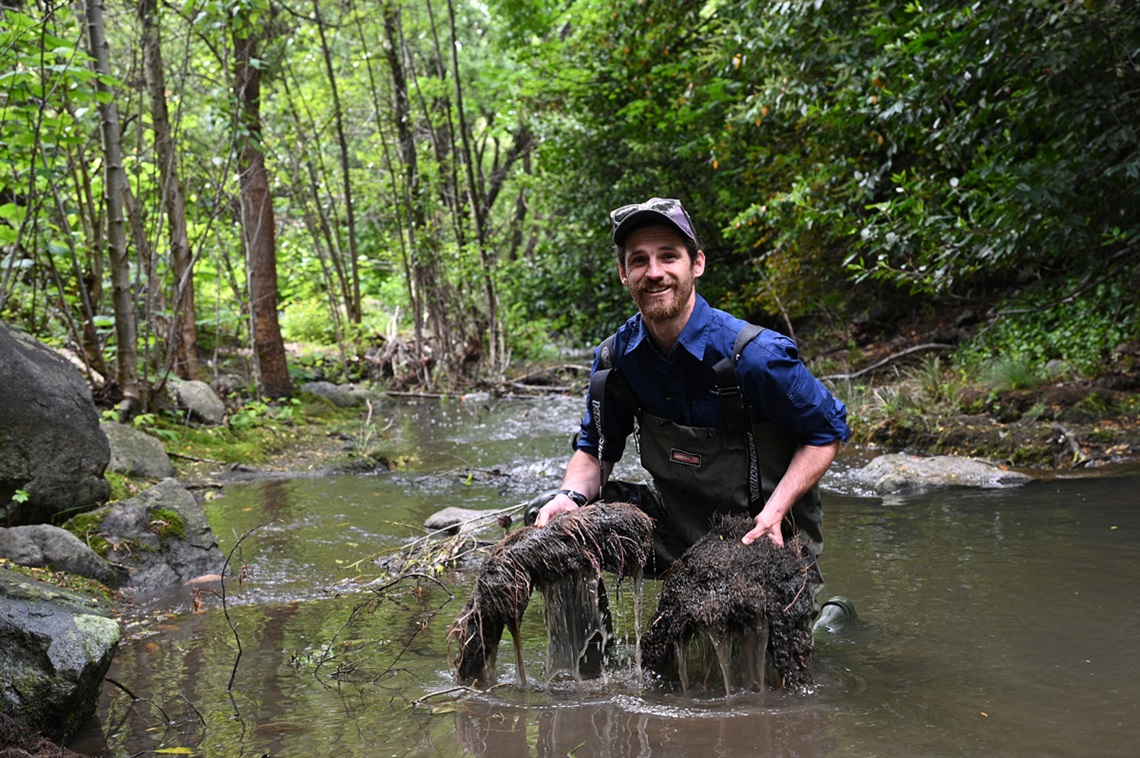
Hobart’s rivulets are home to some incredible and elusive aquatic wildlife.
Our platypuses have captured the hearts and minds of locals and visitors, but our rivulets are home to so much more life, including native fish like the freshwater flathead and our small galaxias, as well as weird and wonderful waterbugs.
But unwelcome in our rivulets is the widespread presence of crack willow, an environmental weed harmful to native aquatic wildlife and the natural ecology of our rivulets.
Crack willows are a highly invasive and destructive tree that have taken over parts of our rivulets, pushing out native trees and shrubs and smothering embankments and rivulet bottoms with their thick, matted roots.
For too long they have been allowed to take over our waterways, putting ecological pressure on native aquatic wildlife and threatening important stormwater infrastructure.
Rewilding our rivulets
Now, with the help of an Australian Government Disaster Ready Fund grant, and matching funding from the City of Hobart, the stranglehold crack willows have on our rivulets is about to end.
We have just started work on a $1.1 million, three year project to eradicate crack willows from every catchment and rivulet in Hobart.
It is an audacious goal, but one that, with careful planning is possible.
The first phase will focus on the Hobart Rivulet. We have already mapped out the crack willows infesting this inland waterway, and have started the removal process.
In some cases that involves simple hand-weeding, but where big trees that threaten critical stormwater are concerned it will mean chainsaws and heavy equipment.
The project will help rewild Hobart’s rivulets by removing destructive crack willows and replacing them with native habitat.
It will also eliminate the threat these willow trees pose to critical stormwater channels - their fallen limbs can block the stormwater system, leading to damaging flood events further downstream.
Launching the project Hobart Lord Mayor Anna Reynolds warned crack willows are smothering our rivulet beds, reducing oxygen available for fish and other aquatic wildlife and making it hard for platypus to forage for food and create burrows.
“We know that weather is becoming more extreme, rainfall events are becoming more extreme, and having those flash flooding events is a risk to Hobart,” Cr Reynolds said.
“The clearing of these environmental weeds will mean that our waterways can flow more naturally, which is good for reducing the risk of flash flooding.
"Crack willows choke inland waterways, with its thickets and fallen branches causing major flooding and bank erosion, and increasing the risks to people, homes, businesses and infrastructure during major flood events.
“I want to thank the Australian Government through the Disaster Ready Fund for contributing to this important project that not only enhances our environment but also positively impacts the risk of flooding.”
This project is a step in the journey to rewild Hobart's precious rivulet system, which will improve the environment for our much-loved platypus while also providing better protection for the community during major flood events.
It is being equally funded by the City of Hobart and the Australian Government through the Disaster Ready Fund and administered by the Tasmanian Government Department of Premier and Cabinet.